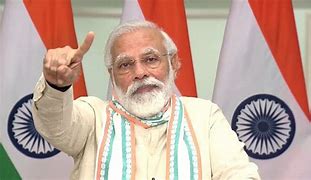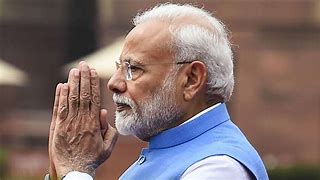Feature
Rs.17 crore goes down the drain at Modi’s washed out Varanasi event

Varanasi: As rains led to the cancellation of Prime Minister Narendra Modi’s visit to his parliamentary constituency on Thursday, for the second time in the past one month, a staggering Rs.17 crore of the tax payer’s money also has gone down the drain. Literally!
If local district and protocol officials are to be believed, washed out trip has cost the exchequer more than Rs.17 crores. While VVIP visits do cost a fortune, the amount spent on Modi’s now-cancelled visit is stunning for more than one reason.
First, while this is in stark contrast to the austerity Modi often speaks of, secondly, if one breaks down the expense of the visit, which was to last four hours and 35 minutes, the per-minute expense was to be Rs 6.18 lakh and the per-second averaging Rs 10,333.
With heavy rains ruining Modi’s programme on June 28, the organizers this time had done their homework well and six special ‘German Hanger’ like marquees were erected for the public rally at Dereka grounds. These gigantic marquees were both fire and water proof and are estimated to have cost Rs 9 crore. Three air-conditioned mobile toilets were requisitioned from New Delhi for use of Modi and his entourage.
The organizers, on condition, of anonymity told IANS that air-conditioners totalling 100 tonnes were in place at Dereka, keeping in mind the humid and sultry weather. Ten special generators to provide 125 KVA electricity were also installed, adding a major expense to the budget. While the VVIP’s were to be provided AC’s to give them respite from the humid conditions, 100 coolers and 2,000 fans were in place for the public.
These generators, along with ten 6 KVA and two 5 KVA gensets would have produced 1.4 MW of electricity that, in ordinary conditions, could have powered more than 1,000 households, an official mused.
This apart, over Rs.4 crore rupees has been sent on boarding, lodging, transport and other expenses of the the prime minister’s security and SPG detail.
A Wi-Fi enabled mini-PMO was also raised behind the hanger in which Modi was to be present during the launch of the developmental projects. Fifteen LED screens that would have telecast the prime minister’s address live to almost 20,000 people amd a high- quality sound system at the rally venue also burnt a hole in the common man’s pocket.
Entertainment
Meghalaya Reserves Legalized Gambling and Sports Betting for Tourists

The State Scores Extra High on Gaming-Friendly Industry Index
Meghalaya scored 92.85 out of 100 possible points in a Gaming Industry Index and proved to be India’s most gaming-friendly state following its recent profound legislation changes over the field allowing land-based and online gaming, including games of chance, under a licensing regime.
The index by the UK India Business Council (UKIBC) uses a scale of 0 to 100 to measure the level of legalisation on gambling and betting achieved by a state based on the scores over a set of seven different games – lottery, horse racing, betting on sports, poker, rummy, casino and fantasy sports
Starting from February last year, Meghalaya became the third state in India’s northeast to legalise gambling and betting after Sikkim and Nagaland. After consultations with the UKIBC, the state proceeded with the adoption of the Meghalaya Regulation of Gaming Act, 2021 and the nullification of the Meghalaya Prevention of Gambling Act, 1970. Subsequently in December, the Meghalaya Regulation of Gaming Rules, 2021 were notified and came into force.
All for the Tourists
The move to legalise and license various forms of offline and online betting and gambling in Meghalaya is aimed at boosting tourism and creating jobs, and altogether raising taxation revenues for the northeastern state. At the same time, the opportunities to bet and gamble legally will be reserved only for tourists and visitors.
“We came out with a Gaming Act and subsequently framed the Regulation of Gaming Rules, 2021. The government will accordingly issue licenses to operate games of skill and chance, both online and offline,” said James P. K. Sangma, Meghalaya State Law and Taxation Minister speaking in the capital city of Shillong. “But the legalized gambling and gaming will only be for tourists and not residents of Meghalaya,” he continued.
To be allowed to play, tourists and people visiting the state for work or business purposes will have to prove their non-resident status by presenting appropriate documents, in a process similar to a bank KYC (Know Your Customer) procedure.
Meghalaya Reaches Out to a Vast Market
With 140 millions of people in India estimated to bet regularly on sports, and a total of 370 million desi bettors around prominent sporting events, as per data from one of the latest reports by Esse N Videri, Meghalaya is set to reach out and take a piece of a vast market.
Estimates on the financial value of India’s sports betting market, combined across all types of offline channels and online sports and cricket predictions and betting platforms, speak about amounts between $130 and $150 billion (roughly between ₹9.7 and ₹11.5 lakh crore).
Andhra Pradesh, Telangana and Delhi are shown to deliver the highest number of bettors and Meghalaya can count on substantial tourists flow from their betting circles. The sports betting communities of Karnataka, Maharashtra, Uttar Pradesh and Haryana are also not to be underestimated.
Among the sports, cricket is most popular, registering 68 percent of the total bet count analyzed by Esse N Videri. Football takes second position with 11 percent of the bets, followed by betting on FIFA at 7 percent and on eCricket at 5 percent. The last position in the Top 5 of popular sports for betting in India is taken by tennis with 3 percent of the bet count.
Local Citizens will Still have Their Teer Betting
Meghalaya residents will still be permitted to participate in teer betting over arrow-shooting results. Teer is a traditional method of gambling, somewhat similar to a lottery draw, and held under the rules of the Meghalaya Regulation of the Game of Arrow Shooting and the Sale of Teer Tickets Act, 2018.
Teer includes bettors wagering on the number of arrows that reach the target which is placed about 50 meters away from a team of 20 archers positioned in a semicircle.
The archers shoot volleys of arrows at the target for ten minutes, and players place their bets choosing a number between 0 and 99 trying to guess the last two digits of the number of arrows that successfully pierce the target.
If, for example, the number of hits is 256, anyone who has bet on 56 wins an amount eight times bigger than their wager.























